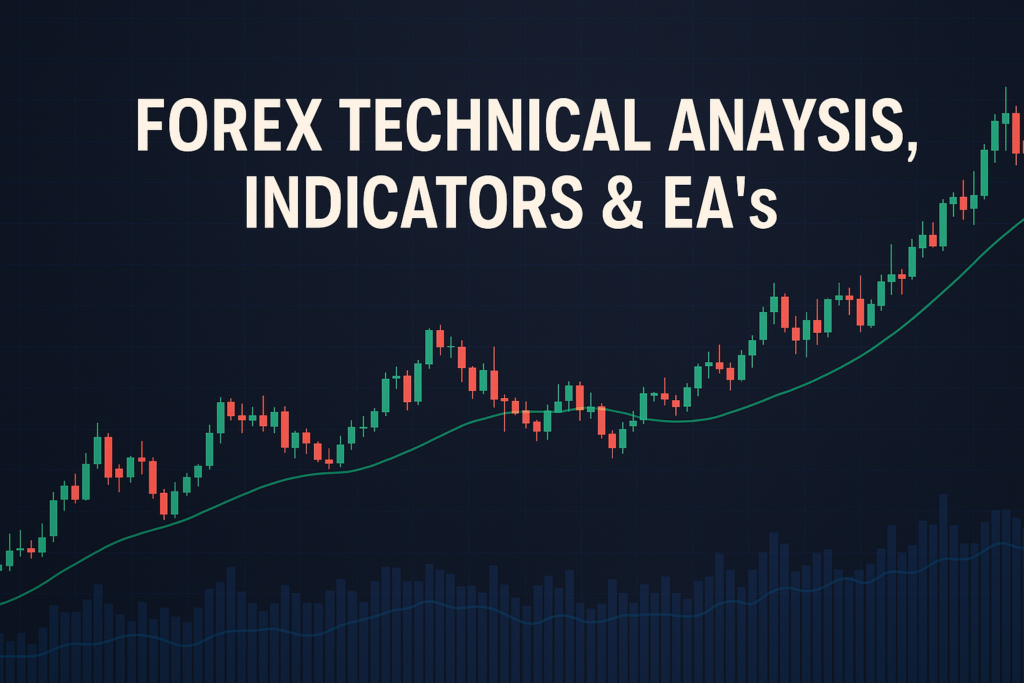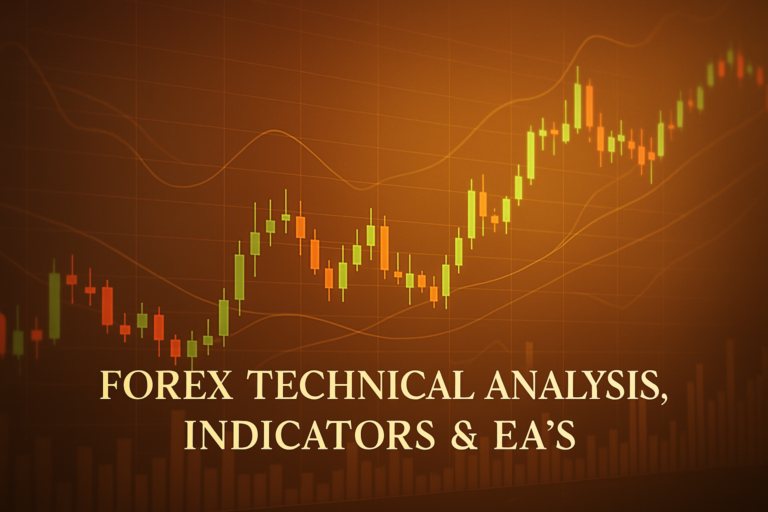
In this blog post, we explored the John Bollinger Bollinger Bands, a vital tool in Forex trading that helps traders identify market trends and volatility.
In the world of Forex trading, understanding technical indicators is crucial. One such indicator is the John Bollinger Bollinger Bands. Developed by John Bollinger, this tool helps traders measure market volatility and identify potential price trends. It consists of three lines: a middle line that’s a moving average and two outer lines that represent price volatility. This makes it essential for traders who want to enhance their decision-making process.
However, many traders, whether they are beginners or seasoned professionals, often struggle to apply the John Bollinger Bollinger Bands effectively. They might find it challenging to interpret the signals or fail to incorporate it into their trading strategies. This lack of understanding can lead to missed opportunities or unnecessary losses. Therefore, grasping the concept of Bollinger Bands is vital for anyone looking to succeed in Forex trading.
This article will explore the John Bollinger Bollinger Bands in detail, covering its definition, history, advantages, and disadvantages. We will also provide practical steps on how to apply it on MT4 & MT5 and share several trading strategies using this powerful tool.
In Forex trading, Volumes play a significant role in understanding market activities. Knowing how volume affects price movements can help traders make informed decisions.
What is a John Bollinger Bollinger Bands?
The John Bollinger Bollinger Bands is a technical analysis tool that helps traders visualize market volatility. Imagine you’re a sailor on a boat. The waves represent price movements, and the Bollinger Bands are like a floating buoy. When the waves are calm, the buoy stays close to the boat. But when the waves get rough, the buoy drifts apart. Similarly, when the market is stable, the bands tighten, and when the market becomes volatile, the bands widen. This helps traders understand when to buy or sell.
Types of John Bollinger Bollinger Bands
There are different types of Bollinger Bands that traders can use. The most common ones are:
- Simple Bollinger Bands: This is the standard version, using a simple moving average.
- Exponential Bollinger Bands: These use an exponential moving average, which reacts more quickly to price changes.
- Weighted Bollinger Bands: These give more weight to recent prices, which can be useful in fast-moving markets.
How John Bollinger Bollinger Bands Smooth Out Price Action
The John Bollinger Bollinger Bands smooth out price action by using a moving average as the central line. This line helps to filter out the noise created by short-term price fluctuations. When prices are above the upper band, it indicates that the market may be overbought, while prices below the lower band suggest it may be oversold. This clarity helps traders make more informed decisions.
Common Periods Used and Why
Traders often use different periods for Bollinger Bands, such as 20, 50, or 100. The 20-period setting is the most common, as it offers a good balance between sensitivity and reliability. A shorter period may react too quickly to price changes, leading to false signals. Conversely, a longer period may provide too few signals. Therefore, choosing the right period is essential for effective trading.
The History of John Bollinger Bollinger Bands: How It Became Popular
Origin of John Bollinger Bollinger Bands
The John Bollinger Bollinger Bands were introduced by John Bollinger in the early 1980s. He developed this tool to help traders analyze market volatility and price trends more effectively. By combining moving averages with standard deviations, he aimed to create a visual tool that could assist traders in making better decisions.
When Did Traders Start Using It Widely?
After its introduction, the John Bollinger Bollinger Bands gained popularity throughout the 1990s. As more traders began to recognize its effectiveness, it became a staple in many trading strategies. Today, it is widely used in Forex trading as well as other financial markets, making it a valuable tool for both novice and expert traders.
Real-Life Stories
Many professional traders have credited their success to the John Bollinger Bollinger Bands. For example, a trader named Sarah used the bands to identify a significant price drop in a currency pair. By entering a buy position at the lower band, she managed to ride the subsequent price increase, making a substantial profit. Such stories highlight the potential of using Bollinger Bands effectively in trading.
Advantages and Disadvantages of John Bollinger Bollinger Bands
Advantages:
The John Bollinger Bollinger Bands offer several advantages for traders:
- Helps Identify Trends Easily: The bands make it easier to spot trends and potential reversals.
- Useful for Dynamic Support and Resistance: The bands act as dynamic support and resistance levels, guiding traders on entry and exit points.
- Works Well for Crossover Strategies: Traders can use crossover strategies with Bollinger Bands to time their trades effectively.
Disadvantages:
Despite its advantages, there are some disadvantages to consider:
- lags Behind Price Movements: The Bollinger Bands are based on historical data, which means they may lag behind current price movements.
- Can Give False Signals in Sideways Markets: In sideways markets, the bands can produce false breakouts, leading to potential losses.
How to Apply John Bollinger Bollinger Bands on MT4 & MT5
Step-by-Step Guide to Adding John Bollinger Bollinger Bands on Charts
To add John Bollinger Bollinger Bands on your MT4 or MT5 platform, follow these simple steps:
- Open your trading platform and select the desired chart.
- Click on “Insert” in the top menu.
- Select “Indicators,” then “Trend,” and choose “Bollinger Bands.”
Customizing John Bollinger Bollinger Bands Settings
You can customize the settings of the Bollinger Bands to fit your trading style. Adjust the periods, colors, and types of moving averages to suit your preferences. Experimenting with different settings can help you find the best fit for your trading strategy.
Saving Templates for Easy Application
Once you’ve customized your Bollinger Bands, consider saving it as a template. This way, you can apply the same settings to future charts with just a click, making your trading process more efficient.
5 to 7 Trading Strategies Using Only John Bollinger Bollinger Bands
1. All Time Frame Strategy (M5 to D1)
This strategy can be applied across different time frames. The key is to look for price touching the upper or lower band. For example, when the price touches the upper band, a sell signal is generated, while touching the lower band indicates a buy signal.
2. Trending Strategies
In a strong trend, traders look for pullbacks to the middle band. When the price retraces to the middle band in an uptrend, it’s an opportunity to buy. Conversely, in a downtrend, a retracement to the middle band can signal a sell opportunity.
3. Counter Trade Strategies
When the price touches the upper or lower bands, some traders might take a contrarian approach. They anticipate a reversal and enter trades against the trend. This requires caution and proper risk management.
4. Swing Trades Strategies
For swing trading, traders can look for price action near the bands. When the price bounces off the lower band, it can be a signal to buy. Similarly, a bounce off the upper band can indicate a sell opportunity.
5. Breakout Strategies
Traders can use Bollinger Bands to identify potential breakouts. When the bands narrow, it suggests low volatility and a potential price explosion. Enter trades when the price breaks above or below the bands.
5 to 7 Trading Strategies Combining John Bollinger Bollinger Bands with Other Indicators
1. Bollinger Bands with RSI
Combining Bollinger Bands with the Relative Strength Index (RSI) can enhance trading signals. For example, if the price is at the upper band and the RSI is above 70, it may signal an overbought condition, prompting a sell.
2. Bollinger Bands with MACD
Using Bollinger Bands with the Moving Average Convergence Divergence (MACD) can help confirm trends. A crossover in the MACD while the price touches the lower band may signal a buying opportunity.
3. Bollinger Bands with Moving Averages
Traders can use moving averages alongside Bollinger Bands. If the price is above the upper band and also above a moving average, it can indicate a strong bullish trend, signaling a buy.
4. Bollinger Bands with Stochastic Oscillator
The Stochastic Oscillator can be used with Bollinger Bands to identify overbought or oversold conditions. When the price is at the lower band, and the Stochastic shows oversold, it may be a good time to buy.
5. Bollinger Bands with Fibonacci Retracement
Using Fibonacci retracement levels with Bollinger Bands can provide additional support and resistance levels. If the price retraces to a Fibonacci level coinciding with a Bollinger Band, it can enhance the trade’s validity.
For more insights on successful trading, check out this article on forex for you.
Top 10 FAQs About John Bollinger Bollinger Bands
1. What are Bollinger Bands?
Bollinger Bands are a technical analysis tool used to measure market volatility and identify trends.
2. How do you calculate Bollinger Bands?
Bollinger Bands consist of a middle line (moving average) and two outer lines that are standard deviations away from the average.
3. Can Bollinger Bands be used for all assets?
Yes, Bollinger Bands can be applied to any asset traded in financial markets, including stocks, Forex, and commodities.
4. Do Bollinger Bands work in sideways markets?
Bollinger Bands can give false signals in sideways markets, so traders should use additional indicators for confirmation.
5. What is the best setting for Bollinger Bands?
The 20-period setting is commonly used, but traders should adjust it based on their trading strategy.
6. How do you interpret Bollinger Bands signals?
If the price touches the upper band, it may be overbought; if it touches the lower band, it may be oversold.
7. Can Bollinger Bands predict future price movements?
Bollinger Bands do not predict price movements but help identify potential trends based on current market conditions.
8. How often should you check Bollinger Bands?
Traders should regularly check Bollinger Bands, especially during significant market events or economic news releases.
9. Are Bollinger Bands suitable for beginners?
Yes, Bollinger Bands are beginner-friendly, making them a great tool for new traders to understand market volatility.
10. Should I use Bollinger Bands alone?
While Bollinger Bands are helpful, combining them with other indicators can improve trading decisions and reduce risk.
In summary, the John Bollinger Bollinger Bands are a powerful tool for traders in Forex. They help identify trends, support and resistance levels, and offer insights into market volatility. Understanding and applying them effectively can lead to better trading outcomes. Always remember to test your strategies before risking real money. Happy trading!
Expand your knowledge with proven strategies from Bloomberg, MacroTrends
Expand Your Knowledge
- 📌 Forex Trading Learning Road Map
- 📌 Forex Trading Course with no Fees
- 📌 Forex Trading Issues, Problems, and Solutions
- 📌 Forex Daily Forecast & Live Updates
- 📌 Forex Fundamental & News Analysis: Tomorrow’s Market Movers & Trade Opportunities
- 📌 Forex Education Hub: Learn & Profit
- 📌 Forex Technical Analysis, Indicators & EA’s
Start Trading Today
Ready to take your forex trading to the next level? Open an account with Exness, one of the most trusted platforms in the industry. 👉 Sign Up Now and trade with confidence!
My recommended broker stands out with ultra-low spreads for beginners, instant withdrawals, and zero spread accounts for pro traders.
Trusted since 2008, lightning-fast execution, no hidden fees, and a secure, transparent trading environment—giving you the edge you need to succeed. 🚀
Watch this helpful video to better understand john bollinger bollinger bands:
Note: The video above is embedded from YouTube and is the property of its original creator. We do not own or take responsibility for the content or opinions expressed in the video.
In a recent conversation with Jeff Hirsh, John Bollinger, a certified financial analyst and the creator of Bollinger Bands, shared the inspiration behind his influential trading tool. The discussion delved into the mechanics of Bollinger Bands, which revolutionized the way traders analyze market volatility. Prior to the development of Bollinger Bands, many traders relied on fixed-width trading bands, which required constant adjustments to remain relevant in changing market conditions. This approach often led to emotional biases influencing trading decisions. John, who was an options trader at the time, recognized the need for a more dynamic solution. By studying volatility, he proposed a method where the market could determine the width of the bands rather than relying on traders’ subjective adjustments. This innovative thinking led to the creation of Bollinger Bands, which utilize a 20-period moving average and set lines two standard deviations above and below that average, allowing traders to gauge price levels effectively.
Bollinger Bands serve as vital tools for traders, providing insights into price behavior and market volatility. When prices are near the upper band, it indicates high prices, whereas prices near the lower band suggest low prices. This information can be instrumental in identifying potential market tops or bottoms. Additionally, traders often look for periods when the bands narrow, known as a “squeeze.” This phenomenon signals that a significant price movement may be on the horizon, prompting traders to prepare for potential breakout opportunities. Importantly, Bollinger Bands are typically used in conjunction with other trading indicators, such as volume indicators, to enhance decision-making. By integrating these tools into their trading strategies, traders can better navigate the complexities of the Forex market, making informed decisions based on the dynamics of price movements and volatility.
In the world of Forex trading, it’s essential to be aware of various concepts, including situations where an “order remains open”, which can occur even when a trader’s take profit level has been reached. Understanding this concept can help traders manage their positions more effectively and avoid unintended consequences in their trading strategies.



